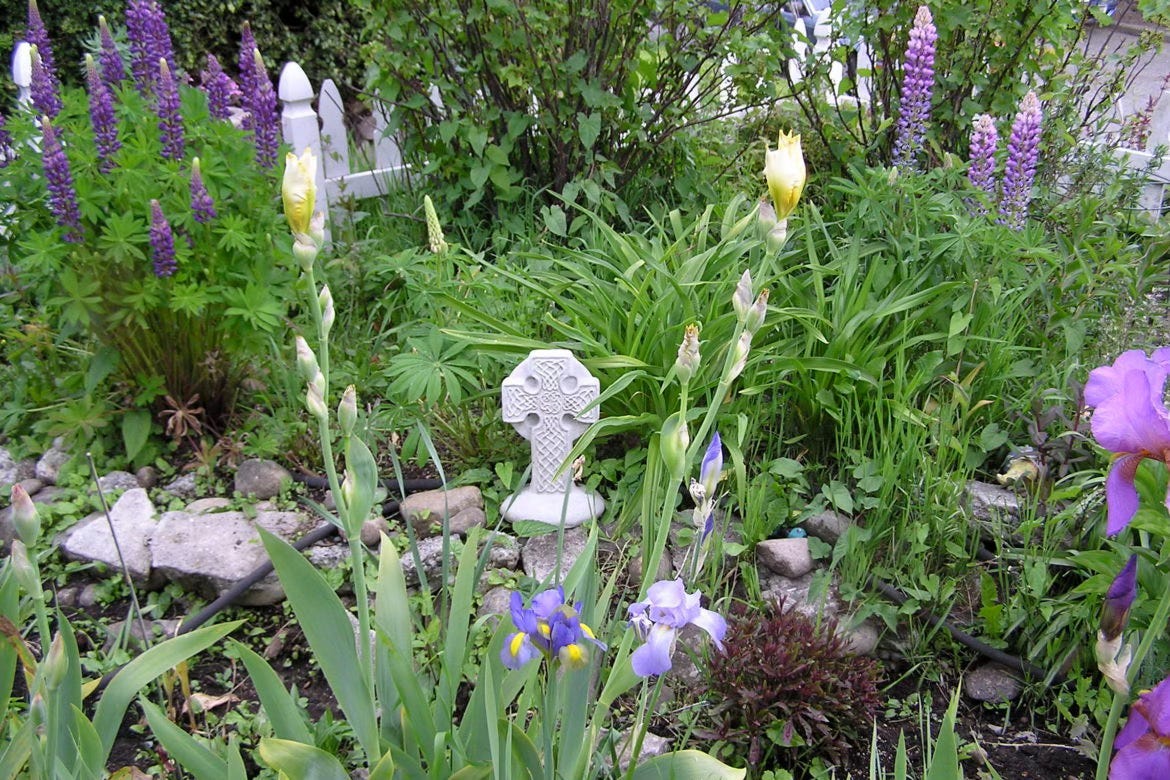What is sacred space and how do we create it?
As many of you know I love to ask the question, What makes you feel close to God?. Interaction with nature is the most common response I get. I believe there is a craving deep within all of us to connect to God in the midst of the created world. Gardening, hiking, bird watching, photographing nature and even petting the dog are all activities that can draw us into the presence of God with a sense of reverence and awe. These sacred spaces need to be recognized and nurtured as much as possible.
It is the garden that most often draws me into the presence of God in this way and I delight in creating the spaces that nurture these encounters. It has become more and more important for me as the years go by. There are many forms of sacred space within a garden and many ways to enhance it. Sometimes these happen unintentionally, which I feel is what has happened to my own garden over the last couple of years. It has become a sacred space without my intending it to be. The addition of a myriad of flowers that attract pollinators, chimes that play softly in the background and fountains whose slowing water make me feel I am sitting beside a stream, all enhance the sacredness of my garden.
However there are deliberate steps I have taken in the past to enhance the sacredness of my space. Here are a few to consider.
1. A place to reflect: What invites you to sit, reflect and meditate? Perhaps it is a garden seat in a secluded corner of the garden or a water feature in which you can see your own reflection, or a collection of your favourite flowers. Consider ways that you could include these elements in your garden.
2. A place to pray. What stirs you to prayer when you go into your garden? Is it the sound of chimes blowing in the wind or that same reflective corner in which you sit to reflect? Is it a cross or garden statue, a plaque with a simple prayer or bible verse or a labyrinth, even an altar can be incorporated into a garden as invitation to prayer.
3. A place to rest. God invites us to slow down and rest in the divine presence. What in your garden already offers this special invitation? What else could you incorporate to further extend this invitation?
4. A place to celebrate. At the centre of the gospel message is the invitation to enter the kingdom of God and join in the banquet feast of God. Incorporating places for hospitality in the garden can open our sacred spaces to friends and strangers near and far. Many community gardens incorporate a common space in which people can gather for meals together.
5. A place to remember. Memorial gardens are important in many cultures often reminding us of loved ones who have gone before. But gardens can stir memories in other ways too. Plants take on a special and often sacred significance when they are given to us by family and friends. My roses have all been planted in memory of family members who have died.
6. A Biblical garden. The practice of planting herbs, flowers and trees mentioned in the Bible is a longstanding tradition. I was delighted when discovered this website on biblical gardens.
7. A healing garden. A growing trend in hospitals, prisons and other institutions is the development of a garden that invites patients and inmates to wander, reduce their stress and relax. In the process many find an unexpected healing and wholeness.
So what makes a garden (wild or cultivated) sacred for you? What draws you into the presence of God in a special way? I would love to know.





This gentle invitation to create sacred space in the garden feels like a return to Eden, not the mythic perfection of an untouched world, but the quieter truth that God still walks among the trees in the cool of the day, waiting for us to notice.
In an age driven by noise and utility, your words remind us that the divine prefers subtle entrances… through rustling leaves, the curved silence of a bench, the shimmer of wings on lavender. Incarnational mysticism begins here: not in grand visions, but in the earth beneath our feet and the scent of rosemary on our fingers.
Thanks for reminding us that holiness is not elsewhere, it is blooming beside us, quietly, faithfully, if only we slow down enough to see.